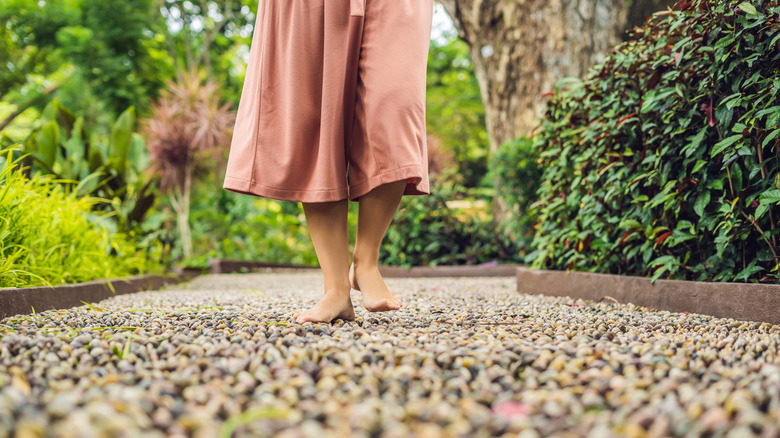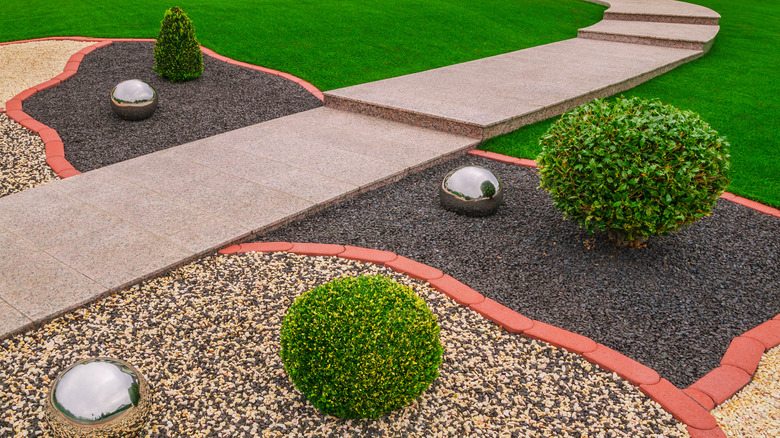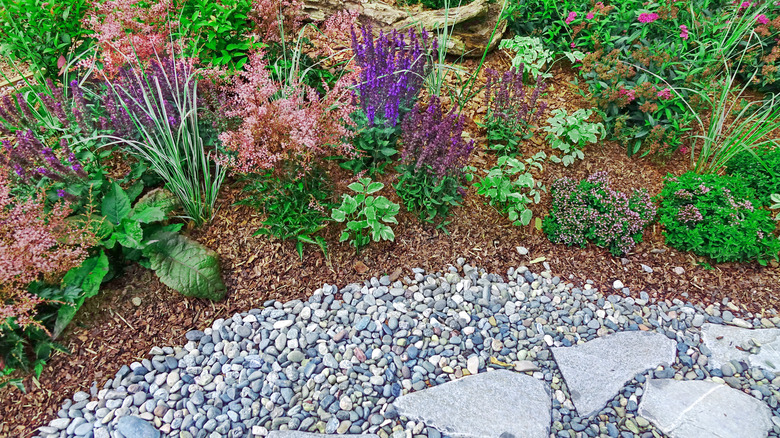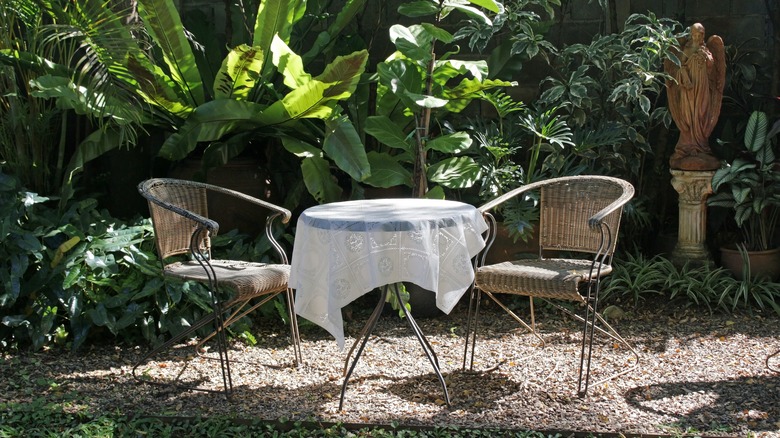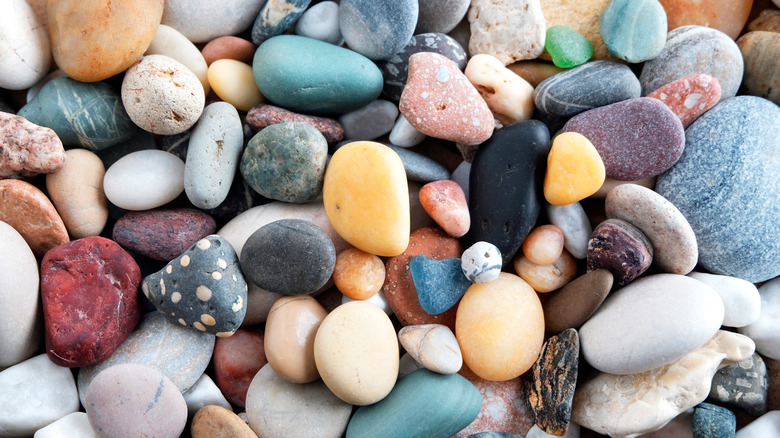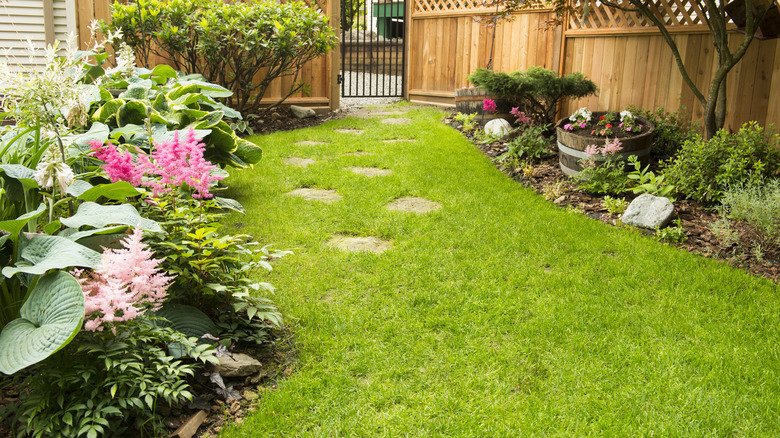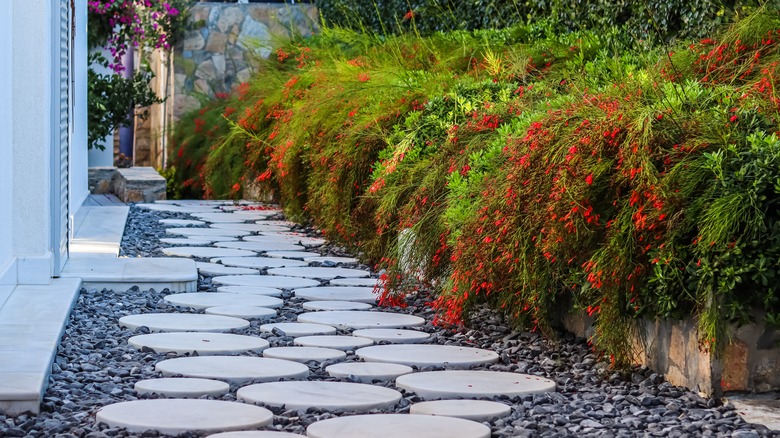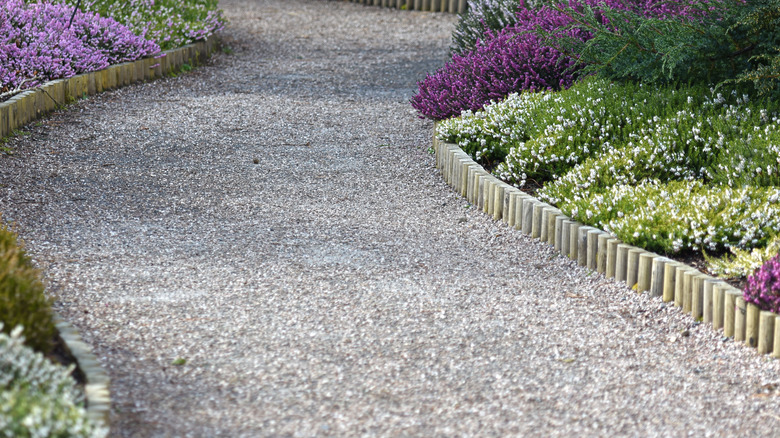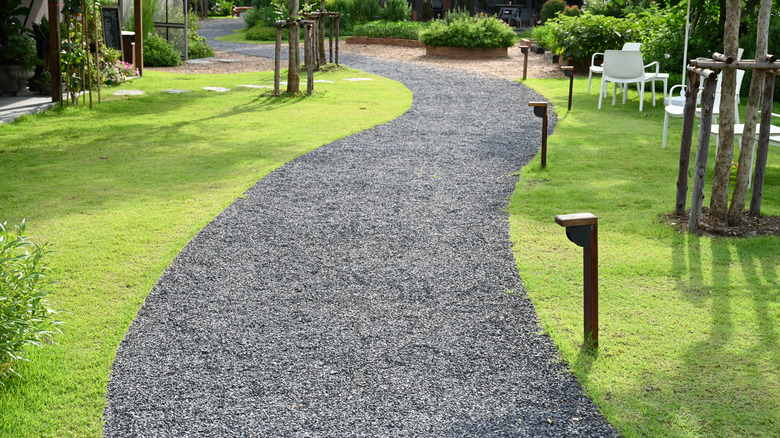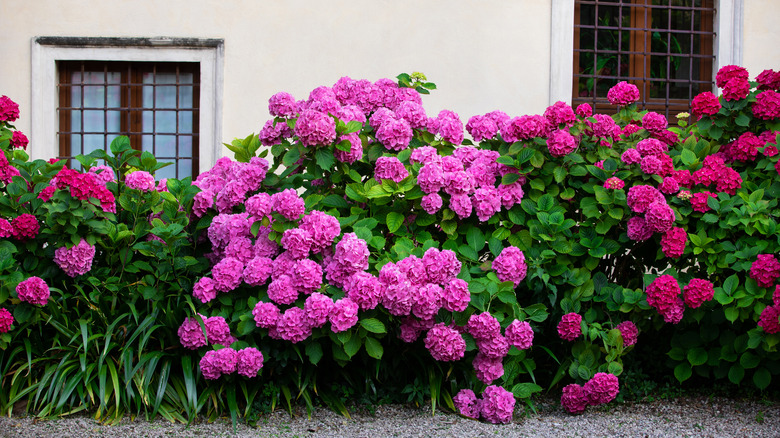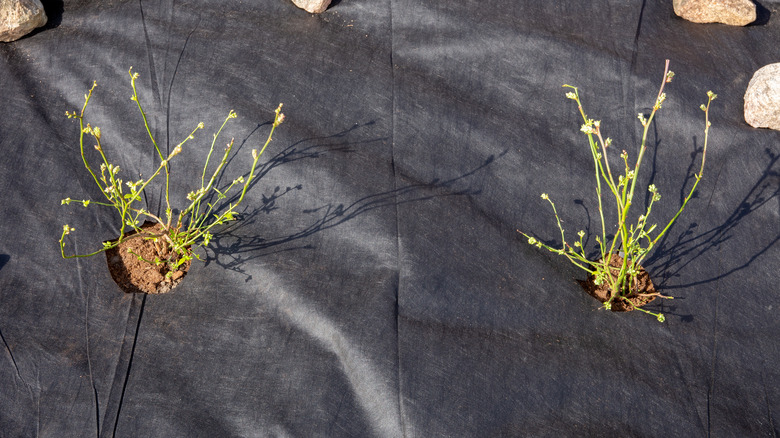Ideas For Having The Best Gravel Garden
Placing greenery on a rocky background creates many unique opportunities to play with texture and shape. Since the 20th century, this concept of gravel gardens has provided homeowners with a sustainable option to beautify an outdoor space (via Denmans Garden). It is simple to set up, easy to maintain and fits well in basically any setting. It is also very doable for DIY lovers and is relatively inexpensive to put in place.
The gravel and the area for the garden are probably the most important things you'll work with because the plants and other décor pieces are dependent on your tastes. One main use of gravel gardens is to cover up problem areas or bustling spots. You can also think of them as a security measure — they act as a great burglar-deterrent due to the noise they produce when they are walked on. Gravel also comes with other benefits, including preventing weed overgrowth, providing natural drainage, and stopping moisture surplus. Whether you're thinking of making a new one or you already have one, these ideas will help you set up your gravel garden so you can get the most value out of it.
1. Keep it simple
Planting your small gravel garden in a small area or courtyard helps you not get carried away while decorating. With a small space, you can keep it simple and avoid too much overcrowding. It also makes it possible to be careful with your décor choices and still be innovative.
2. Choose the right plants
Gravel creates a dry environment, and sensitive plants won't last long, so seek out those drought-tolerant florae. Plants like black mondo grass, lavender, gaura, and euphorbias will add some beautiful color, while others, like needle grass, phlomis, and succulents, can create a diverse blend of textures.
3. Make it usable
What better way to maximize this space than using it to gather with your friends? Gravel gardens don't have to be only good to look at. With two chairs, the courtyard can become a sanctuary where you can enjoy the outdoors. Or, turn the patio into a gravel garden to get the best of both worlds.
4. Go the eco-friendly route
Clay, bark, scaffolding boards, and other treated recycled materials are some options you can use in your gravel garden. They can be made as fun DIY projects that give it that personal feel and go beyond buying and pouring simple gravel. Be sure to have some beautiful leftover pieces for when you need to top up.
5. Open space
This garden style is very forgiving due to no rules on how much space you need or what can go into it. Let this allow you to do what you wouldn't usually do in your garden. Do you want to put together shrubs that wouldn't normally go together? Try it out in the gravel garden mix. Anything goes!
6. Make a good walkway
Is your gravel space actually a path? Then, you'll want flora that won't grow to cover it completely: The plants should be of a decent size and shape to be admired while passing. If the gravel garden is on a slope or you expect a lot of rain and snow, use slip-resistant materials to reduce accidents.
7. Edges for a tidy look
The gravel can easily move around, so creating an edge is important. Steel is popular due to its durability, while granite is liked for its natural look and its neutral colors. Plastic is a cheap option but won't provide the best look. Also, ensure that the gravel is a few inches lower than the top.
8. Use what you have
No matter what soil type you have, you can use it as a base for your gravel. For example, you can add compost to your sandy soil or just place many layers of gravel on top of clay soil. Just ensure that you have an adequate amount of rock for the soil type on your property.
9. Have a color scheme
Yellow and green, pink and purple; you can choose a color combination and pick plants and shrubs that fit the scheme to create a uniform yet unique look for your gravel garden. The complementing colors alongside different textures will create a beautiful haven. Regardless of how much space you have, the cohesion shows intentionality.
10. Watch for weeds
Weed barrier fabric is commonly used for gravel gardens as it stops weeds from perking up through the stones. It comes in rolls that can fit the width and length of the desired area and is laid on the soil before the gravel. If you've already set up your gravel garden, you can use weed killers instead.
